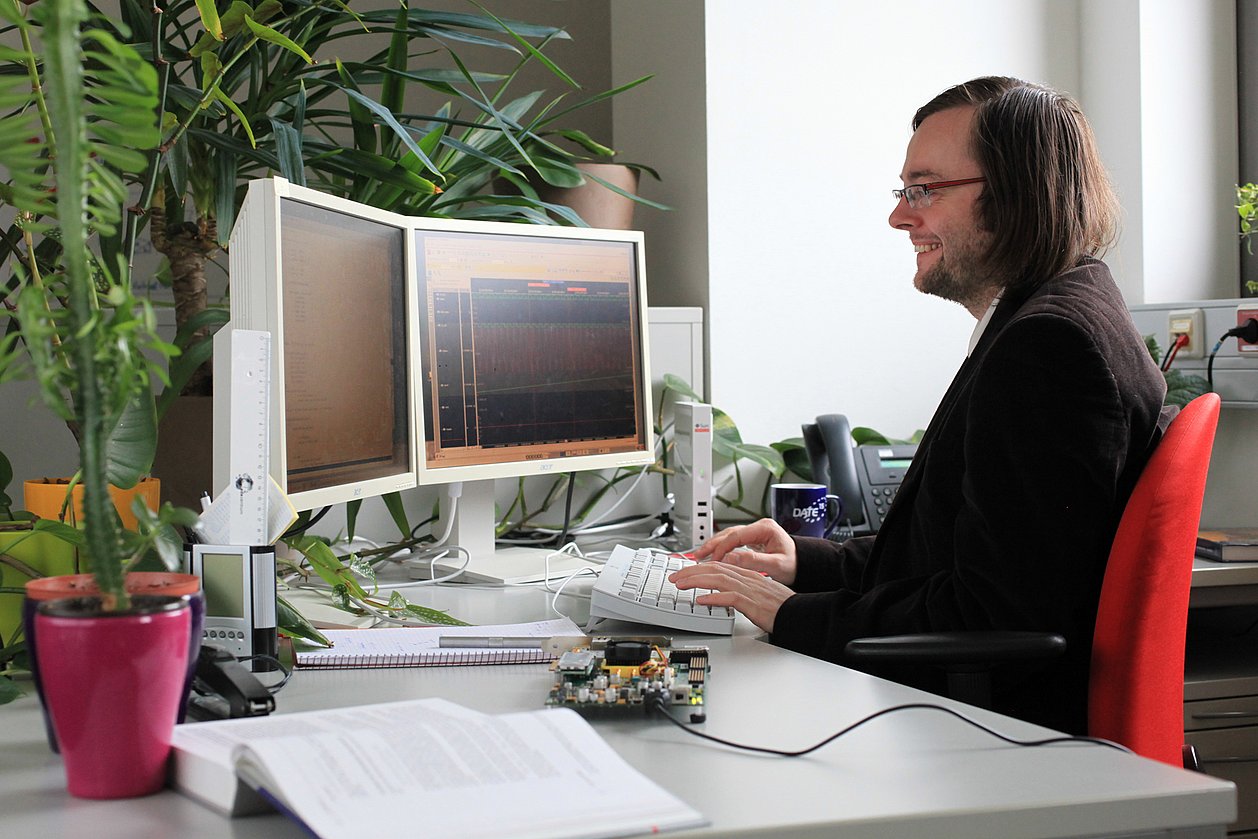Press releases
EDA Competition Award for "Trash or Treasure" - Intelligent Layout Processing
1st prize of the IEEE CEDA goes to young scientists from Ilmenau TU and IMMS
23.07.2021. A team of eight students, PhD students and researchers from Technische Universität Ilmenau and IMMS Institut für Mikroelektronik- und Mechatronik-Systeme gemeinnützige GmbH (IMMS GmbH) won the EDA Competition Award on 22 July 2021. The competition was supported by the IEEE Council on Electronic Design Automation (CEDA) for young scientists and sponsored with 1000$. It called for participants to demonstrate solutions that help improve design automation for integrated circuits and systems during the international conferences on methods for integrated circuit design SMACD 2021 and PRIME 2021.
Julian Kuners, an engineering informatics student at Ilmenau TU and student assistant at IMMS, presented the entry “Trash or Treasure? Machine-learning based PCB layout anomaly detection with AnoPCB” to the jury of representatives from Cadence Design Systems GmbH Germany, Dialog Semiconductor Germany, Infineon Technologies Germany, Gebze Technical University Turkey and Reutlingen University.
This software project was supervised at Ilmenau TU by Dr. Marco Seeland and Prof. Dr.-Ing. Patrick Mäder from the Department of Data-Intensive Systems and Visualisation and at IMMS. The work is based on solutions developed in Thüringen's IntelligEnt research group for the layout of microelectronic chips. “When layouting analog/mixed-signal circuits, you design the blueprint for the chip manufacturer. However, formally correct layouts can contain inconsistencies, such as substrate coupling and mismatch,” explains Georg Gläser from IMMS, specialist for the integration of AI methods into design automation and head of the research group. Design experience of engineers plays a major role especially in the geometric design of circuits, and these last steps on the way to manufacturing require knowledge about which wires carry particularly sensitive or highly interfering signals and how these must be handled, Gläser continues. “We have therefore developed an AI-based anomaly detection method in the research group that can detect non-proven and potentially faulty spots in layouts.” The solutions for a flexible data representation are important here, because they can be used to process layout data for both chips and printed circuit boards - and the latter is what the award-winning contribution is about. “Julian Kuners, Henning Franke and Paul Kucera then further developed the software project as student employees at IMMS. They put the finishing touches on our learning anomaly detection method as a plug-in for the free PCB design tool KiCad. This allows our approaches to be applied much more broadly,” is Gläser's assessment.
With the plugin, KiCad signals can be divided into categories and passed on to the training or evaluation process. The system was designed in such a way that the design data is prepared at the user's site for the process and then transmitted to a central server for processing. Thus, on the one hand, a graphics processor, if necessary, is only needed in the server and, on the other hand, the designs of several users can be combined.
The jury evaluated the candidates' solutions on the basis of complexity, degree of automation, designer interface, applicability, degree of integration with available design tools and robustness, among others: “The presented tool convinced the jury by the complexity of the posed problem, which in our view was solved well. The tool is user-friendly and we see it not only as an academic solution, but also as a solution that can be used in practical applications by PCB designers. The tool has considerable potential and we are interested to see how it progresses,” says jury member Anton Klotz of Cadence Design Systems GmbH.
“For the first training, we used open-source designs such as Crazyflie and HackRF and then built in fault spots there. With our plugin for anomaly detection, we were able to locate these spots quickly and correctly,” explains Julian Kuners. “Of course, this spurs us on - and the prize anyway. We would like to use the opportunity and call on developers to work with the plugin. The more training data there is, the more we can expand and improve it.” The plugin will be made available for this purpose in the near future.
This might also be interesting for you
Related content

Project
IntelligEnt
The IMMS researched assistance systems for chip designers: Machine Learning improves design and test methods for integrated analogue/mixed-signal…

Event,
CiS Workshop 2023
Workshop Simulation & Design 2023 at CiS Forschungsinstitut für Mikrosensorik

Event,
FED Conference
30th Conference of the German Association for Design, Printed Circuit Board and Electronics Manufacturing (FED)

Event,
Forum Künstliche Intelligenz
Artificial Intelligence Forum of the German specialist media Elektronik, Elektronik automotive und Computer&AUTOMATION. The forum was cancelled by the…

Event,
KI für KMU
KI für KMU – Prozesse optimieren mit künstlicher Intelligenz, Vortragsveranstaltung von Mittelstand 4.0
Contact
Contact
Dipl.-Hdl. Dipl.-Des. Beate Hövelmans
Head of Corporate Communications
beate.hoevelmans(at)imms.de+49 (0) 3677 874 93 13
Beate Hövelmans is responsible for the text and image editorial work on this website, for the social media presence of IMMS on LinkedIn and YouTube, the annual reports, for press and media relations with regional and specialist media and other communication formats. She provides texts, photographs and video material for your reporting on IMMS, arranges contacts for interviews and is the contact person for events.




![[Translate to English:] [Translate to English:]](/fileadmin/_processed_/8/8/csm_20210803_EDA-Competition-Award_Gruppenfoto_IMG_5674_15x10cm_300dpi_8eadb2f7ee.jpg)



